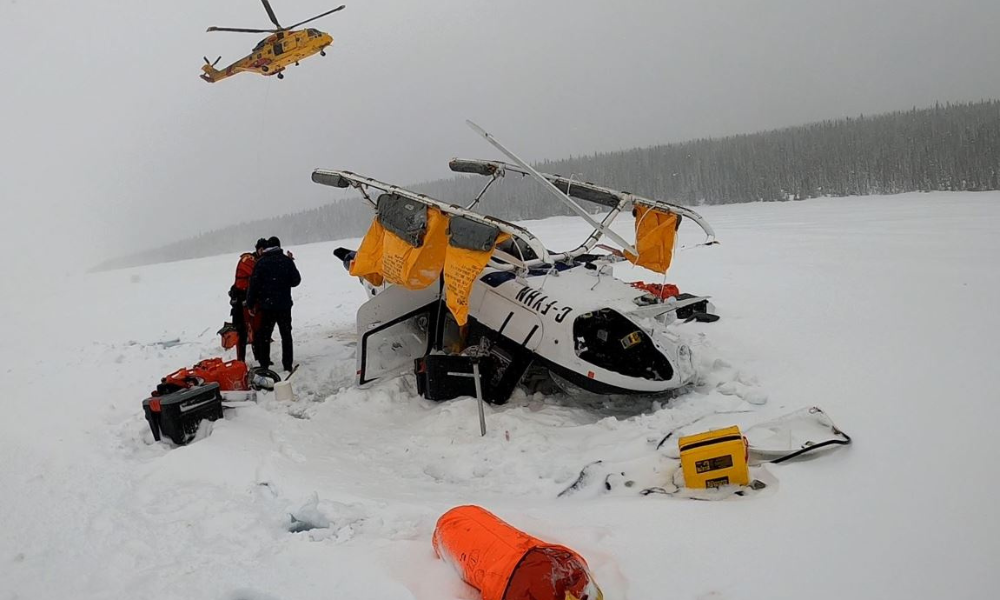'Pilots are reminded to plan ahead, consider strategies to avoid adverse weather, and have alternate plans should such weather be encountered'

The Transportation Safety Board of Canada (TSB) has found that deteriorating weather conditions and pilot misjudgement during a precautionary landing attempt led to the crash of a helicopter in Newfoundland and Labrador last year.
The incident happened in May 2024.
Prior to the incident, the pilot arrived at Goose Bay Airport (CYYR) on April 28, 2024, and was scheduled to conduct a visual flight rules (VFR) flight in a Custom Helicopters Ltd. (Custom Helicopters) Bell 206L helicopter (registration C-FYHN, serial number 45050) to Pangnirtung Airport (CYXP), Nunavut.
According to the TSB, the purpose of the flight was to position the helicopter and commence contracted flying in support of scientific research as part of the Polar Continental Shelf Program on Baffin Island, Nunavut.
On each of the next 3 days, the pilot planned to conduct the 860 nautical mile (NM) flight; however, after each daily review of the weather conditions along the planned route, he assessed the conditions to be unsuitable.
On May 2, 2024, the pilot reviewed NAV CANADA’s weather forecast products in preparation for the flight.
“Despite reduced visibility and cloud ceilings due to ongoing light snowfall at CYYR, the pilot assessed that conditions on the overall route were suitable to conduct the flight,” said TSB.
However, during the flight, the pilot encountered worsening snowfall and low cloud ceilings shortly after takeoff, forcing him to fly at low altitude and reduced speed to maintain visual reference.
As visibility dropped below ½ statute mile, the pilot made multiple course changes before attempting to land on a frozen lake. During the descent, poor visibility led to a misjudgement in altitude, resulting in a collision with terrain, according to TSB.
The helicopter struck the frozen surface of Lewis Lake. The pilot sustained minor injuries.
“VFR flights that continue into IMC often result in a collision with terrain or a loss of control due to a loss of visual references,” said TSB. “Pilots are reminded to plan ahead, consider strategies to avoid adverse weather, and have alternate plans should such weather be encountered.”
Multiple safety red flags
Investigators found that the helicopter was more than 300 pounds over its maximum takeoff weight, according to TSB.
Also, the aircraft had a Sentry Plus portable automatic dependent surveillance—broadcast receiver on board that incorporated a global positioning system receiver and an attitude and heading reference system. However, the pilot did not turn it on or pair it to the tablet he was using for navigation
The helicopter was also equipped with a flight following and satellite communications system manufactured by SkyTrac (model ISAT-200A). The ISAT-200A enables global flight following, voice, messaging, and data transfer capabilities. However, “the helicopter departed with the ISAT‑200A unit in an unserviceable condition,” said the TSB.
Also, while the pilot had a valid commercial licence, they did not have an instrument rating.
Transport Canada issues an instrument rating for aircraft in one of the following groups:
- Group 1 for all aeroplanes where the flight test was conducted in a multi-engine aeroplane,
- Group 2 for multi-engine centre line thrust and single engine aeroplanes where the flight test was conducted in a multi-engine centre line thrust aeroplane,
- Group 3 for single engine aeroplanes where the flight test was conducted in a single engine aeroplane, and
- Group 4 for helicopters where the flight test was conducted in a helicopter.
The agency assesses applicants’ knowledge, experience and skill before issuing the rating.
“Following this accident, Custom Helicopters developed several simulator training scenarios for VFR pilot training that emphasize pilot decision making in reduced-visibility conditions,” said the TSB. “Custom Helicopters also implemented a checklist designed for a pilot’s first flight in a duty sequence with a particular helicopter that includes prompts for the pilot to ensure Zoleo and SkyTrac functionality.”





